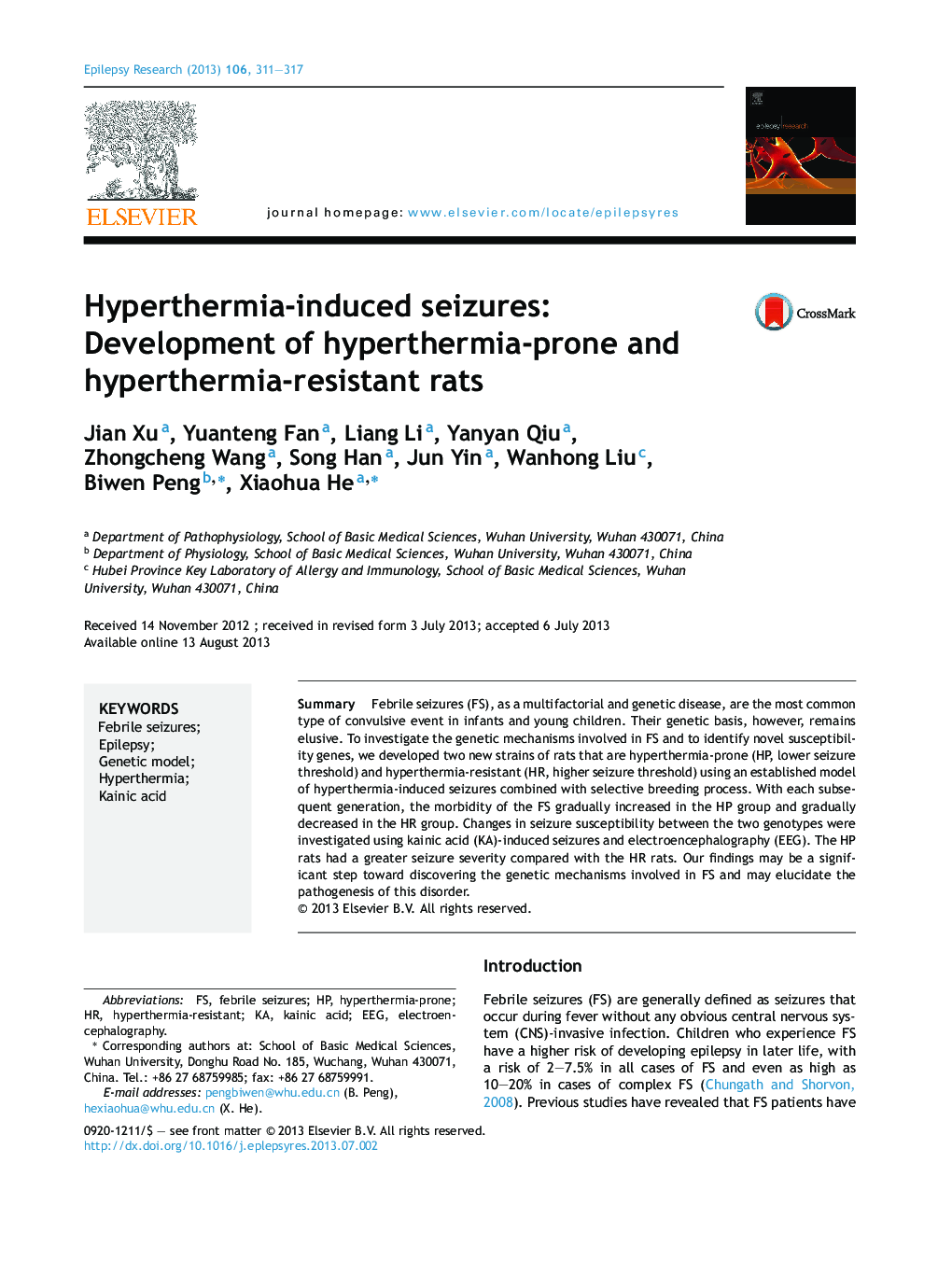| Article ID | Journal | Published Year | Pages | File Type |
|---|---|---|---|---|
| 3052237 | Epilepsy Research | 2013 | 7 Pages |
•We developed novel genetic model of FS, including Hyperthermia prone (HP) & resistant (HR).•Behavior & EEG recording proved HP experienced higher seizure severity than HR rats.•HP rats experienced higher seizure severity following KA-induced seizures than HR rats.
SummaryFebrile seizures (FS), as a multifactorial and genetic disease, are the most common type of convulsive event in infants and young children. Their genetic basis, however, remains elusive. To investigate the genetic mechanisms involved in FS and to identify novel susceptibility genes, we developed two new strains of rats that are hyperthermia-prone (HP, lower seizure threshold) and hyperthermia-resistant (HR, higher seizure threshold) using an established model of hyperthermia-induced seizures combined with selective breeding process. With each subsequent generation, the morbidity of the FS gradually increased in the HP group and gradually decreased in the HR group. Changes in seizure susceptibility between the two genotypes were investigated using kainic acid (KA)-induced seizures and electroencephalography (EEG). The HP rats had a greater seizure severity compared with the HR rats. Our findings may be a significant step toward discovering the genetic mechanisms involved in FS and may elucidate the pathogenesis of this disorder.
